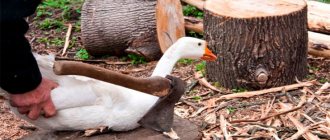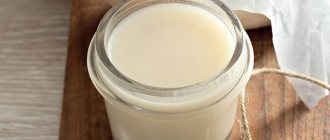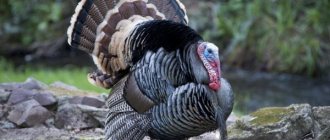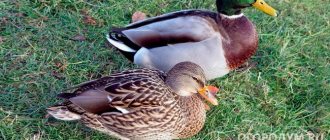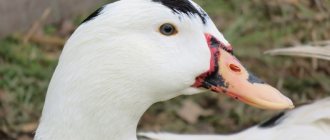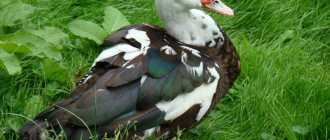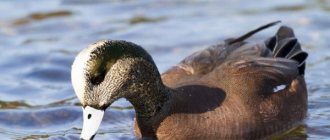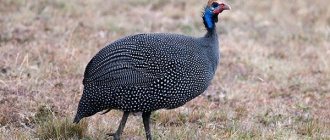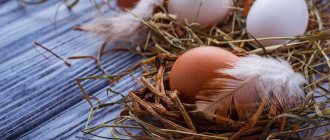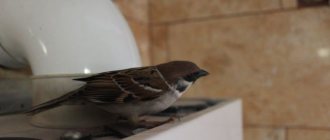Duck has very fatty and tasty meat, among other things, this meat is very healthy. It contains various amino acids, minerals and proteins. Considering its unpretentiousness in maintenance, many home owners choose ducks for breeding. However, after successful breeding, sooner or later the question arises about taking benefits from the animal, namely meat. Slaughtering a duck is not a difficult task. It’s much more difficult afterwards.
duck cutting
Poultry slaughter
The feather covering will tell you when to slaughter and pluck the duck. The feathers on the body should already be large, but on the wings they should not yet be fully formed, immature. Most likely, this will be a young bird about 60-65 days old. Sometimes - up to 2.5 months.
If slaughtered later, the carcass will become bristly and unattractive. Plucking a duck in such conditions is more difficult. It is not advisable to delay the procedure. But even in this situation there is a way out. Over time, the bird changes its feathers, so you can predict the moment of renewal of the plumage on the wings.
Prepare the duck for slaughter:
- Stop feeding the bird 12-16 hours before. Taking it will help clear the goiter.
- Don't stop drinking.
- Leave the house lights on the night before.
It is better to slaughter birds indoors or in a secluded corner of the yard in the open air. You will need a sharp knife, rope, and a container to collect blood. Hang the duck by its legs and tuck the wings one behind the other to prevent them from drooping. Experienced poultry farmers use special cones. The duck's head is threaded through a narrow hole, and the body is inside the vessel. Place a container under the bird.
The whole procedure consists of two stages:
- Stretch the bird's neck and cut the carotid artery. Hold the tool at a slight downward angle.
- Leave the carcass for 10 minutes. in limbo. During this time, blood will drain from it.
Advice. After 2-3 hours, start plucking the duck. During this period, the subcutaneous fat will harden in it, which will allow you to carefully remove the covering from the carcass.
Mechanical
In addition to manual methods, people have come up with machines called feather removal machines to facilitate this work. Many mechanical devices for removing feathers are made by yourself, using a drill and attachments with striking fingers.
Plucking a duck with this advanced drill takes an average of ten minutes. But speed, unfortunately, does not always imply quality. Often, after such processing, the condition of the carcass leaves much to be desired - the skin is damaged, limbs are twisted, there are some bruises. This describes the worst, but possible option. Therefore, whether to use this method or not, decide for yourself.
And also, if you keep a lot of ducks and the time has come to slaughter some of them, then do it so that other ducks do not see. That is, in a place specially equipped for this purpose. And this is not only for humane reasons, but also for practical ones. Because if you save their nerves, you will get more meat in the future.
How to pluck a duck: 3 ways
Whichever traditional method you choose, start plucking a domestic or wild duck from the large feathers on the wings and tail. Then move on to the rest. Pull feathers in the direction of their growth. One of the popular ones is the dry method:
- place the duck on a paper or cloth mat;
- remove large and medium feathers;
- Coat the bird generously with flour;
- singe the small feathers.
For the last stage it is convenient to use a gas burner. Firing time - no longer than 2-3 seconds. Otherwise, you will melt the skin and fat, and this will negatively affect the marketability and taste of the duck. At the end of the procedure, thoroughly wash the carcass in cold water and remove carbon deposits from it.
An alternative method is scalding. With it you can pluck a duck quickly and easily. The method is chosen when it is not possible to process the bird immediately after slaughter. At least 4 hours must pass from this moment.
Instructions:
- Place the bloodless duck carcass in a large container;
- heat the water separately to 80 °C;
- gently turn the duck under the hot stream;
- Fill the carcass with cold water and leave it for 15 minutes;
- pull it out, wipe it and pluck it - now it will be much easier to do;
- singe a small feather.
Attention! After scalding, the color of the meat turns red. This does not affect the quality of the product.
Another method is called hot:
- pick up a piece of burlap to wrap the duck;
- soak the material in hot water, wring it out;
- wrap the carcass for 20 minutes;
- walk over the surface of the burlap with a heated iron;
- Unwrap and remove feathers.
Preservation of fluff
Down and feathers are valued as raw materials. The procedure for preparing fluff:
- Rinse the fluff in warm water, adding a little washing powder.
- Rinse the fluff in cold running water.
- Squeeze out the water.
- Place the down in a fabric bag and hang to dry. It is advisable to hang the bag in the sun.
- Stir the fluff periodically to prevent it from rotting or caking.
To wash feathers, soak them in a soapy solution for 30 minutes.
Manually plucking a duck is a labor-intensive and painstaking process that requires a certain skill. The condition of its skin, the taste of the meat and even its shelf life depend on how correctly the bird is plucked.
0
0
Copy link
Subtleties and tricks of work
The following tips will help simplify the process:
- Before manually plucking a duck, sit comfortably and have your knife ready. Hold the carcass between your knees, and place a container under it to collect feathers.
- If you carelessly damage the skin in the process, it will spread as the feathers are further pulled out. This will make work difficult.
- During singeing, fully unfold the carcass so that feathers and fluff are not hidden in the folds.
- Remove small hairs (but not burnt fluff and fines) in the following way:
- Apply the blunt side of the knife to the area near the hair;
- press your finger against the blade;
- With a sharp movement, pull the knife towards you.
Advice. It is correct to plan the hot method and scalding when you are going to cook the duck right away. After all, preliminary heat treatment will trigger some irreversible processes inside the product. Before freezing or storing the carcass for short-term storage in the refrigerator, use dry processing.
Mechanized methods
For large volumes of work, use a special pen-removal attachment with rubber fingers, which is put on a drill or screwdriver. Before starting work, the bird is beheaded and scalded at a temperature of 70 degrees (if the duck is old, the temperature is increased by 5-10 degrees). The duration of exposure is 1.5-2.5 minutes. The tool is secured on the table using a stand, the basin is placed down and processing begins. Many people note that the mechanized method is not very convenient; you need to get used to it. The first experience can be disappointing.
On an industrial scale, more powerful feather removal machines are used, which remove up to 95% of the feather in a short time. The remaining stumps and fluff are removed by hand. The removal of debris is facilitated by water, the supply of which is provided for by the technological process.
The wax method can also be used. In this case, while moving along a conveyor, the carcasses are covered with a wax mass, then immersed in water and, after cooling, sent to a plucking machine.
How to gut a duck: step-by-step sequence
Follow clear instructions when gutting poultry. It will help you carry out a rather labor-intensive procedure as quickly as possible:
- Using a sharp knife, separate and move the paws to the waste.
- Make an incision on the neck. Separate the trachea from the neck meat.
- Cut the belly in a straight line along its entire length.
- Trim the gooseneck, but do not catch the insides. Hold this part with one hand. With the other, carefully pull out the contents of the cavity.
- Pull the stomach and at the same time push the trachea inside the duck. Remove the intestines. Make sure that some of them do not remain in the middle.
- Separate the heart. Cut out the bile from the liver.
- Make a small incision on the stomach. Clean the cavity with a knife from food debris and rinse. It is important to remove a thin layer of skin from the inside of the stomach. This is not an easy but necessary manipulation.
- Find the lungs between the ribs. They are often clogged with sand. To get rid of it, the carcass will have to be rinsed again under strong water pressure.
- Separate the tail. Notice the space above it. Secreting glands are located there. When cooked, they can ruin the taste and aroma of the duck. Cut them out.
Gutting is completed with another water procedure - warm. Rinse and then thoroughly rub the carcass with plenty of baking soda. Achieve lightening of the cover. Do not start cutting the duck right away. Let the carcass rest for 30-40 minutes.
Pen processing
Knowing how to quickly pluck a domestic duck, you can collect feathers and down of good quality - these raw materials can be used in the future. It has excellent heat-insulating properties and is used as a filler for pillows and blankets. Larger feathers are used to make crafts or replace a brush for brushing baked goods.
Before use, the raw materials must be prepared: rinse well and dry. Sorting is carried out during the plucking process. Then it is soaked in soapy water, left there for 2-3 hours and rinsed until the detergent is completely washed away. This procedure allows you to remove dust, grease, and other contaminants. The last stage is drying. The raw materials are placed in fabric bags and dried, periodically shaking and turning to avoid rotting. When drying, a prerequisite is free access to fresh air - the bags can be placed under a canopy or in the sun. In the latter case, it is important to ensure that sudden precipitation does not spoil the result.
How to cut a duck correctly
First, use a sharp knife to cut off any layer of fat you see. Start with the neck. Pay attention to subcutaneous fat. There will be a lot of it there even after removal, so the duck will not be lean in any case. The collected fat should not be thrown away. You can use it to cook the bird itself or another dish.
Advice. As a last resort, the product can be cut into pieces and frozen.
Then proceed like this:
- Start preparing portioned fillets. Turn the duck onto its back. Using a knife, make a cut along the length in the middle.
- Cut all the way through the skin to the bone.
- Carefully separate the meat from the bones. Keep the knife parallel to the plane and try to grab as much pulp as possible. The tool must be sharp. “Sawing” will lead to loss of marketability of the bird.
- Turn the carcass over and do the same procedure.
- Grab the keel bone with one hand. With the other, press the carcass to the table. Pull the bone forcefully. The task is to remove the bone frame of the duck: the spine, ribs. They will come in handy for the broth.
- Separate the wings and legs. To do this, cut the tendons where the joints bend.
Advice. Do not try to cut large tubular bones. They will not affect the appearance or taste of the dish. But crushed fragments can spoil the tasting experience.
It is necessary to pluck a duck and carry out other manipulations with it in good lighting, without haste and taking into account safety precautions. After all, you will have to work with a sharpened tool.
Note to housewives
- Try to cut so that each portion is covered with skin. The golden brown crust into which it turns is the calling card of the duck.
- Try to do without an axe, but you can use kitchen scissors, especially if you still have very little experience in cutting poultry carcasses. Duck bones, of course, if the bird is not an old-timer, are not difficult to cut, and you will not need any additional effort.
- Kitchen scissors can be used to trim the last phalanx of the wing, which is set aside for the broth.
- Try to feel the joints and cut along them. Then you will have no chance of cutting your hands with the sharp edges of the bones, and their fragments will not get into the meat.
- The duck has one peculiarity - a sebaceous gland is located on the tail. If you don't remove it and the tail ends up in the broth, you will have to throw it away as the aroma will be less than attractive.
So, now it has become clear - there is nothing complicated in cutting a duck, everything is easy and simple, the seemingly complex work only took you a few minutes. Even a person who has picked up a carcass for the first time in his life can cut duck meat beautifully. As you can see by looking at photo 2, the portioned pieces of duck should look neat and appetizing.
We answered the question: how to properly cut a duck, and we hope that you and your loved ones will like your dishes with it. Well, if you want to please your guests, then, after proper cutting, they will probably be surprised by your culinary abilities. Feel free to get to the stove and be sure that your dishes with duck will turn out just as brilliantly as cutting it. Bon appetit!
Removing feathers from skin
Removing feathers along with the skin is faster and easier, especially when it comes to field conditions. Experienced hunters also advise using this method if the duck’s skin has a distinct orange tint.
This color indicates that the bird fed mainly on shellfish. This means that the skin of the individual will have a lot of fat and taste like pork. Skinning can be carried out immediately after slaughter or over time.
You will need to prepare wire cutters and a sharp knife.
The work algorithm looks like this:
- Step 1: Cut off the legs. The incision is made as close to the body as possible. It is convenient to use wire cutters, but you can also use a knife. It is not necessary to throw away this part of the body. It makes a rich, tasty broth.
- Step 2. Separate the wings. The joint closest to the body is twisted with pliers, it is separated and the only attachment remains a piece of skin. The final cut is made with a knife, capturing the armpit. Some people prefer to break the connection with their hands. As an option, amputate the extreme part of the wings, trim the skin from the edge of the remaining part to the armpit. Completely cut wings are suitable for broths. The top phalanx contains meat, so it can be fried and baked.
- Step 3. Define the sternum. Place the bird on its back and feel the breast. Having found a bone, press it firmly. The skin will begin to separate and will be easy to pick up with your fingers and cut. To make it easier to find the right bone, preliminary plucking some of the feathers from the sternum will help. With them it is more difficult to feel the hardness, since they create a soft “cushion”.
The breastbone is listed as number 19
- Step 4. Separate the skin. Use your hands to pull the cover away from the chest in different directions, similar to the principle of removing a jacket. The fingers are inserted into the cut made earlier. If it was not there, the skin is torn with a stronger and sharper tension. The bird should lie on a hard, clean surface (do not place it on bare ground). In cases where there is no improvised table, the plucker presses the duck carcass with its back to his chest and gradually pulls the skin over himself like a shirt.
- Step 5: Remove skin. After separation from the breast, the cover continues to be pulled from the shoulder joints and folded back near the tail. In this case, the tail feathers are not removed. The pairs of wings and legs have already been cut off, the armpits have been notched, so the “stocking” will be removed without any extra effort right up to the neck. As a rule, a knife is no longer required, although the skin is quite dense and sticky. The process is carried out without sudden movements, carefully.
Skinning feathers
The resulting skin can be discarded or used to make a stuffed animal. Meat should be washed, cooked or frozen.
